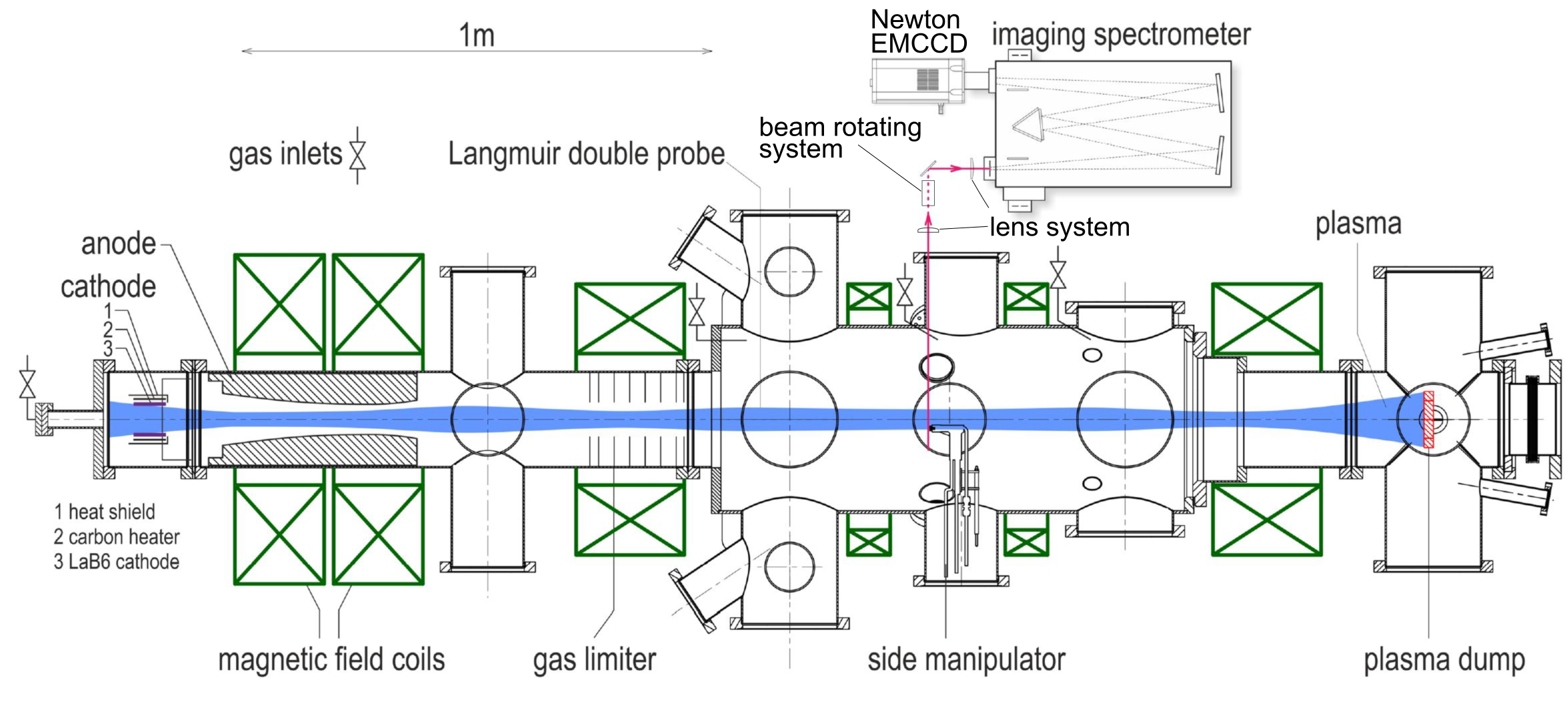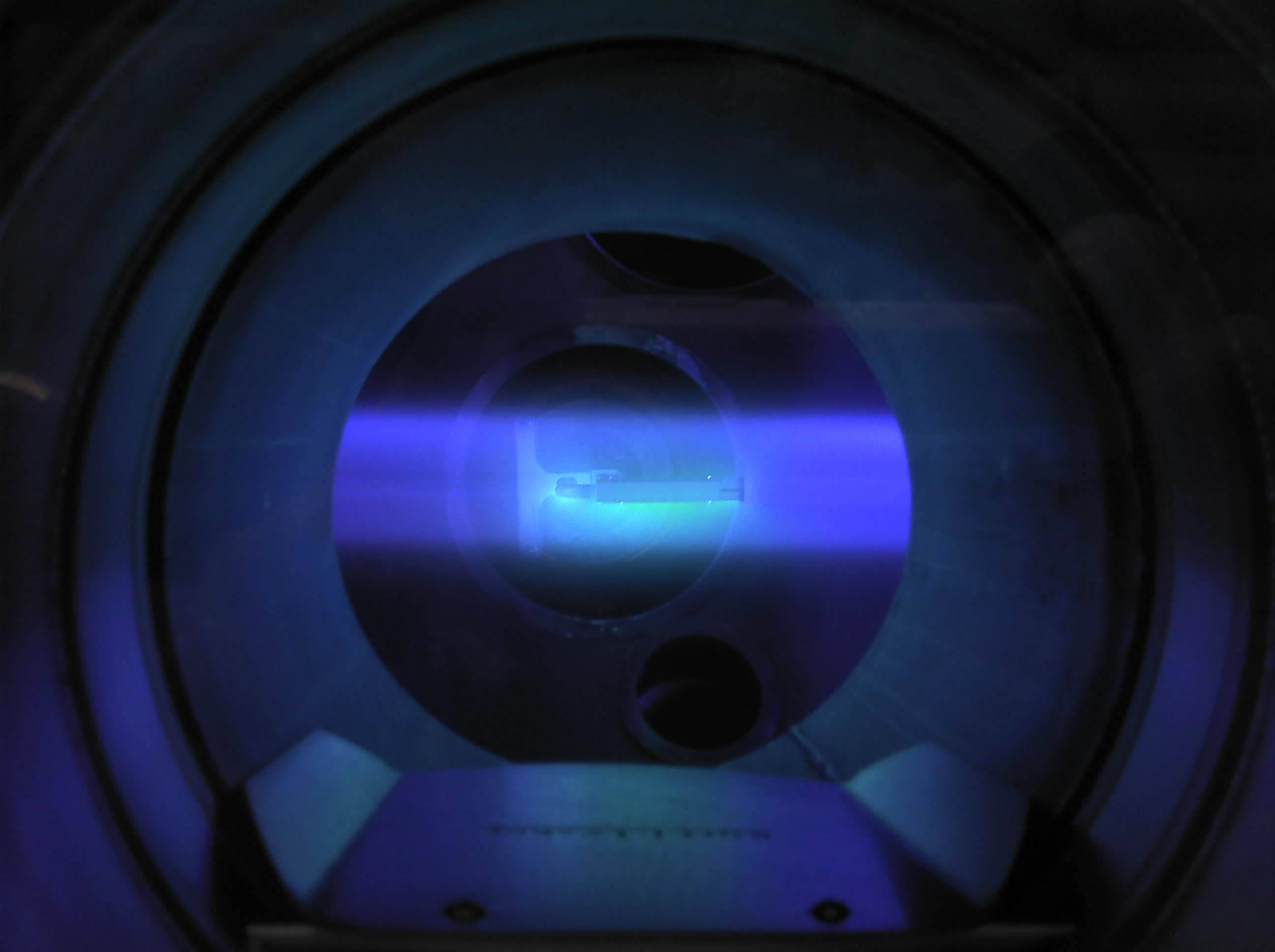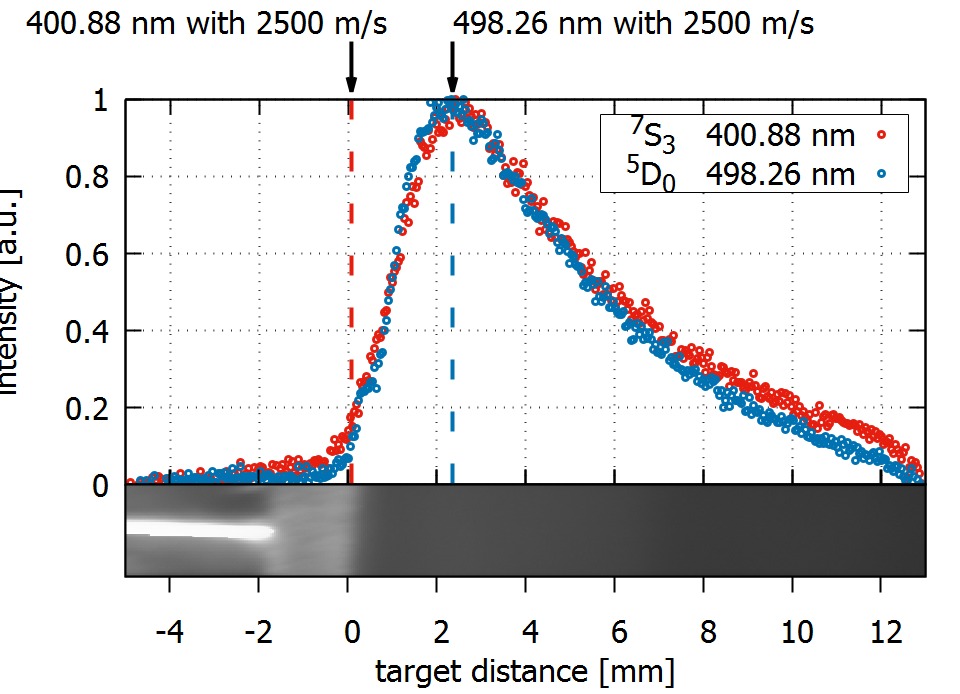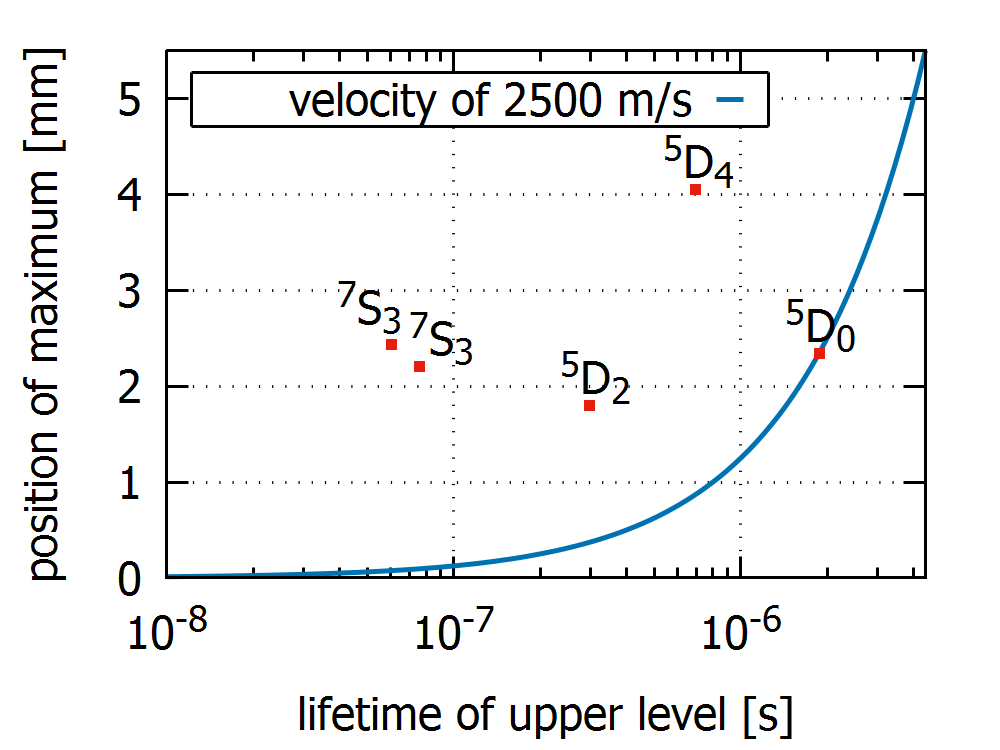Resources
 Part of the Oxford Instruments Group
Part of the Oxford Instruments Group
Expand
Collapse
 Part of the Oxford Instruments Group
Part of the Oxford Instruments Group
Tungsten (W) is predicted to be a plasma-facing material in future fusion reactors. Spectroscopy is an important means for particle flux measurements in the plasma. For an interpretation of the measured neutral W line (W I) intensities, the population distribution of J levels within the fivefold ground term 5D and the 7S3 level of sputtered tungsten entering the plasma remains an open question [1]. Therefore, W targets were exposed to plasma in the linear plasma device PSI-2 and sputtering of the material was spectroscopically investigated. The spatial distance in between the target and the position of the intensity maximum of the line provides information about the temporal level evolution. This correlation was used to investigate the atomic level distribution of the sputtered tungsten.
The experiments took place in the linear plasma device PSI-2 [2]. A schematic setup is shown in figure 1.

Fig.1: The linear plasma device PSI-2 with the optical observation system.
An Acton Spectrograph SpectraPro 750 with a Newton EMCCD detector DU971P-UVB was used for spectroscopic analyses of processes in PSI-2. Due to a rotating mirror system the slit can be orientated horizontally, i.e. orthogonal to the target surface, to observe the time dependent development of the eroded species. A picture of the plasma and the exposed target is shown in figure 2.

Fig.2: W target exposed to Argon plasma using the side manipulator.
An additional lens system was used to increase the spatial resolution to 50 µm per pixel. This leads to an overall spatial spectra observation of 20 mm along the axis. The W target was exposed to an Argon plasma at Te ≈ 2 eV and ne ≈ 7x1011 cm-3 and the development of the line intensities was observed. The plasma ions were accelerated by biasing onto the target to an impact energy of around 80 eV. The spectra were taken in the first order so the dispersion per pixel on the Newton EMCCD was in the order of 0.016 nm. Thus the spectral width of approximately 25 nm could be detected with one picture. The dynamical range of the camera allowed us to observe all investigated lines with an exposure time of 10 s using the conventional CCD mode.
The lifetime of the excited level is equal to the reciprocal Einstein coefficient (A). The mean velocity of the sputtered particles (vmean) for an impact energy of Argon of 80 eV is approximately 2500 m/s [3]. Assuming an angular distribution of the sputtered atoms [4], the distance to the target for the maximum intensity is given by d ≈ vmean/(2A). In figure 3 the spatial developments of two W I lines are shown.

Fig.3: Spatial behaviour of a 5D0 line compared to a 7S3 line. The dashed lines give the expected points for the maxima of emission. The bottom picture shows the target recorded with the spectrometer in the zeroth order and open slit.
It can be seen that the transition to the ground level (498.26 nm) is in good agreement with the expected value, whereas the most popular tungsten line (400.88 nm), that ends in the slightly more energetic 7S3 level, is at its maximum intensity at a larger distance and hence later than expected. Other transitions to the ground states are compared to the calculated position of maximum intensity in figure 4.

Fig.4: The detected position of maximum emission for the lower level of the investigated transition compared the theoretical value for a mean velocity of 2500 m/s.
Only the line to the ground level is in good agreement with the theory, all other lines reach the maximum at a larger distance from the target than expected. Thus the data suggests that at a mono-energetic ion energy in the range of 100-200 eV, set by target biasing, all atoms are sputtered primarily in the lowest ground level 5D0. Other levels are populated subsequently in the plasma.
[1] Beigman et al. Plasma Phys. Control. Fusion 49, 1833 (2007)
[2] A. Kreter et al. Fusion Science and Technology 68, 8-14 (2015)
[3] W. Eckstein IPP-Report (2002)
[4] M. Stepanova et al. Journal of Vacuum Science & Technology A: Vacuum, Surfaces, and Films 19, 2805 (2001)
Dr. Sebastijan Brezinsek
Institute of Energy and Climate Research
Plasma Physics
Forschungszentrum Jülich GmbH
52425 Jülich
Germany
Phone: +49 (2461) 61-6611
E-mail: s.brezinsek@fz-juelich.de
Web: https://www.fz-juelich.de/iek/iek-4/EN/Home/home_node.html
Date: May 2019
Author: S. Ertmer, S. Brezinsek, A. Pospieszczyk, O. Marchuk, A. Kreter
Category: Application Note
